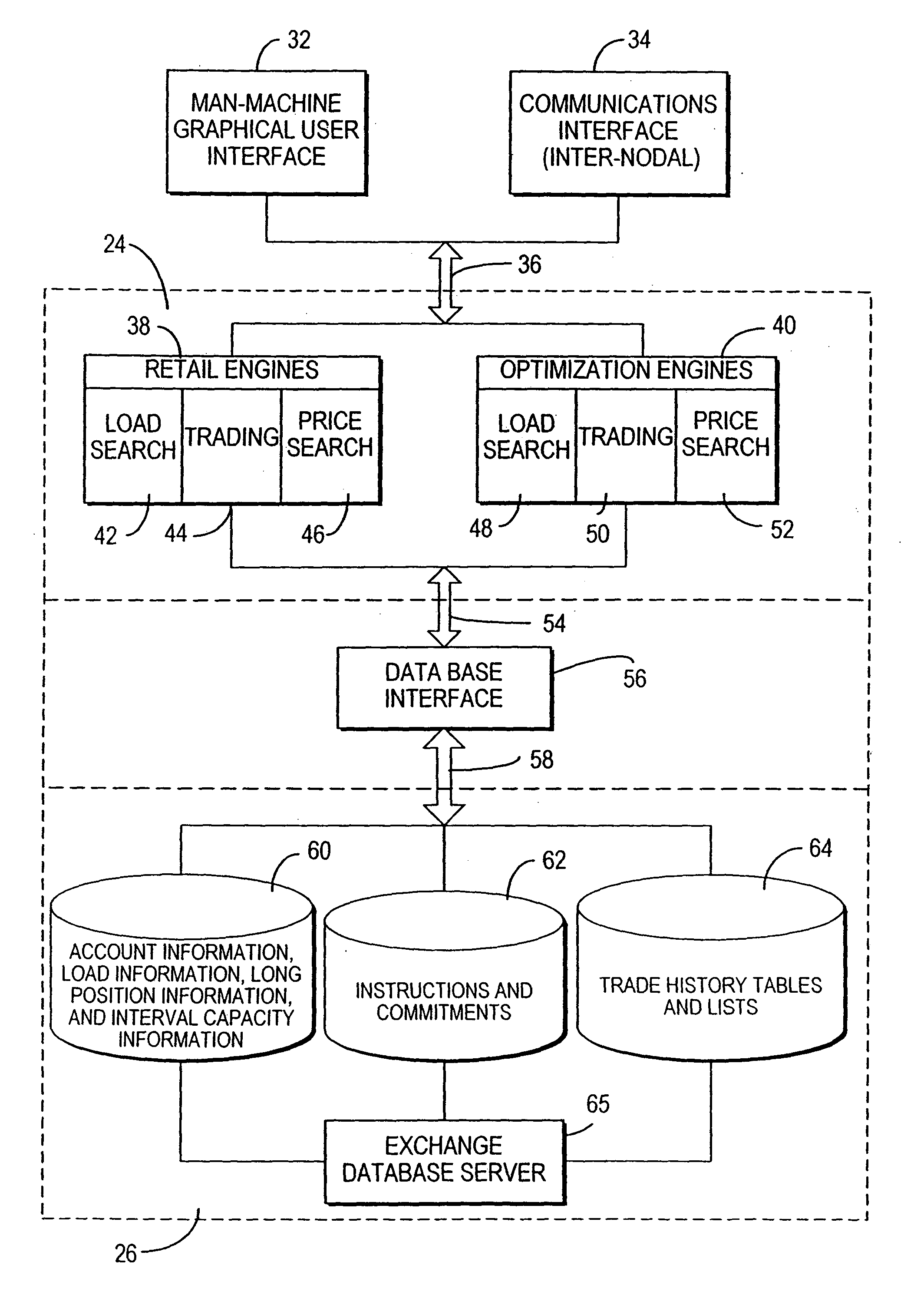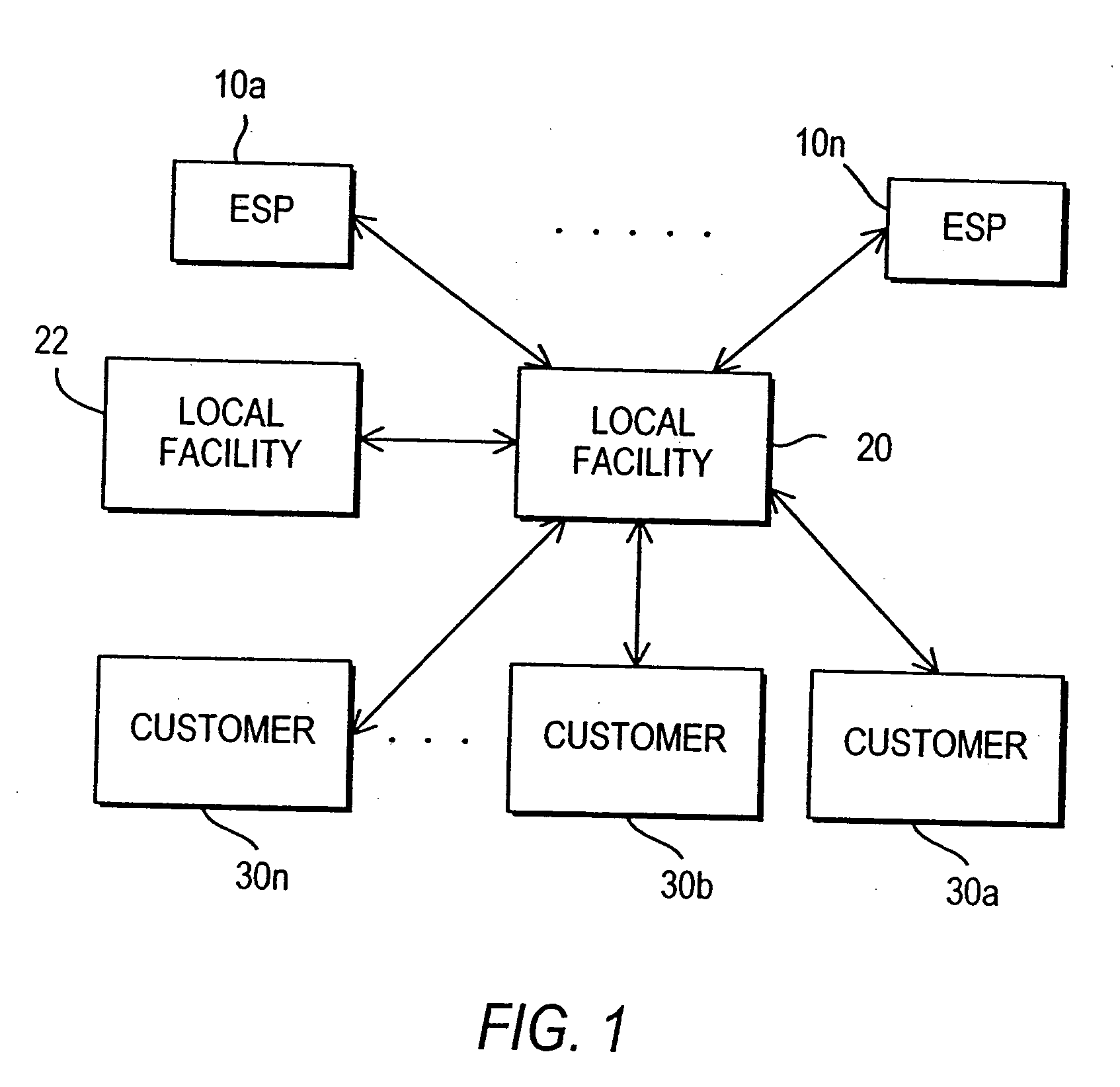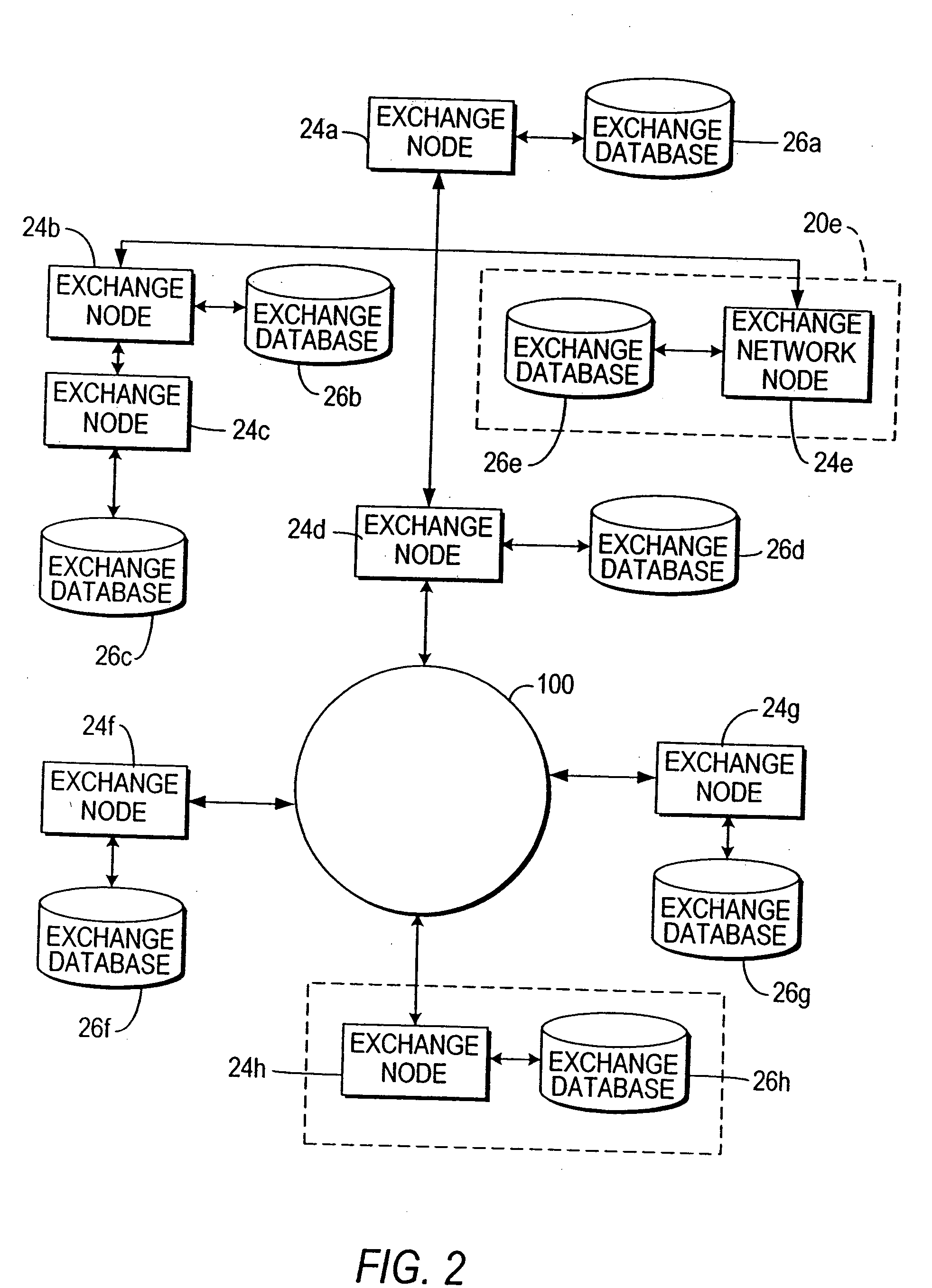System and method for creating a cost-effective and efficient retail electric power exchange/energy service provider load optimization exchange and network therefor
- Summary
- Abstract
- Description
- Claims
- Application Information
AI Technical Summary
Benefits of technology
Problems solved by technology
Method used
Image
Examples
Embodiment Construction
I. DEFINITIONS
[0032] The following definitions of terms used in this disclosure are in addition to definitions of terms provided elsewhere in the text.
[0033] Account information—Either or both of customer account information and ESP account information.
[0034] Aggregate load—A load made up of the customer loads of individual customers (or segments thereof) that have joined together as a buying group or engaged a common representative to act for them in joint purchases of electric energy. (A customer with more than one customer load should be viewed as an aggregator with respect to its own customer loads if the customer issues instructions to do so.)
[0035] Aggregation transaction—A transaction involving the combination of customer loads (or segments thereof) as when customers join together as a buying group or engage a common representative to act for them in joint purchases of electric energy; and either or both of a local aggregation transaction and a network aggregation transact...
PUM
 Login to View More
Login to View More Abstract
Description
Claims
Application Information
 Login to View More
Login to View More - R&D
- Intellectual Property
- Life Sciences
- Materials
- Tech Scout
- Unparalleled Data Quality
- Higher Quality Content
- 60% Fewer Hallucinations
Browse by: Latest US Patents, China's latest patents, Technical Efficacy Thesaurus, Application Domain, Technology Topic, Popular Technical Reports.
© 2025 PatSnap. All rights reserved.Legal|Privacy policy|Modern Slavery Act Transparency Statement|Sitemap|About US| Contact US: help@patsnap.com



